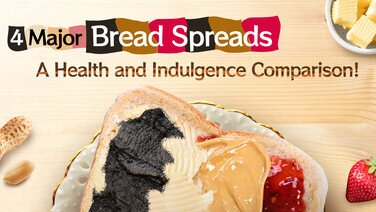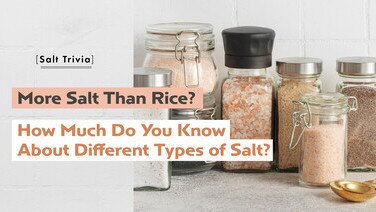4 Common Types of Non-Stick Pans
Including: model with PTFE coating (without stone/particle patterns); model with stone/particle pattern coating; model with net/honeycomb pattern coating, and model with plain ceramic coating (without stone/particle patterns).

The Main Component of Traditional Non-Stick Coating: PTFE
Polytetrafluoroethylene (PTFE) is a synthetic chemically inert substance. It is highly chemical-resistant, anti-oxidant, anti-adhesive, heat-resistant, acid-resistant and alkali-resistant. However, it also has its weakness as it cannot endure strong impact (such as scraping by a metal spatula) and can easily be damaged.
Does the Non-Stick Coating Cause Cancer?
The production of PTFE may use perfluorooctanoic acid (PFOA) and perfluorooctane sulfonate (PFOS). Animal studies have shown that PFOA and PFOS may harm the liver and reproductive function, and can be carcinogenic. The International Agency for Research on Cancer (IARC) has also classified PFOA as “possibly carcinogenic to humans”. As non-stick PTFE coating may leave behind traces of PFOA or PFOS, there has been speculation that non-stick coating may cause cancer.
Having said that, the Consumer Council has previously conducted a test on 25 models of non-stick pans on the amount of PFOA, PFOS and metal substances released, and all the models passed the test. In particular, the test showed that the release of PFOA and PFOS was lower than the recommended upper limit set by the German Federal Institute for Risk Assessment (BfR, an independent research institute under the German government to protect consumer health) for non-stick kitchenware, and the amount of release of metal substances was also lower than the recommended upper limit set by the Council of Europe for metallic and alloy kitchenware. Besides, BfR has pointed out that even if some small pieces of the non-stick coating are peeled off and swallowed, they will not pose a health risk as the body will not absorb these substances, and they will not cause any toxic reaction to the body. Therefore, consumers should not be too concerned.
Of course, consumers may also consider other features such as “anti-abrasion” and “anti-scratch” performance when choosing non-stick pans. In general, the performance varied amongst the 4 types of non-stick pans under test.
Toxic Fumes are Released Under High Heat?
In addition, some studies have found that PTFE will release toxic fumes at high temperatures. The higher the temperature, the more toxic fumes will be released. When heated to 315°C to 375°C, the fumes released may cause “polymer fume fever”, and patients will experience flu-like symptoms such as chills, fevers, excessive sweating, coughs and difficulties in breathing. However, if the patient is removed from the source of the fumes, symptoms will ease after 24 to 48 hours.
However, when heated to 450°C, tetrafluoroethylene (TFE) will be released, which has been linked to the death of mice used in animal studies; when heated to 460°C and 475°C, hexafluoropropylene (HFP) and perfluoro-isobutylene (PFIB) will be released. Among them, TFE is classified as a possible carcinogen. Based on the data and information from the Hazardous Substances Databank (HSDB) on the U.S. National Library of Medicine’s network, inhaling these 3 substances may irritate the respiratory system, resulting in symptoms such as coughs, dizziness, and chest tightness, etc.
Daily Cooking Does Not Reach Such High Temperatures
Although PTFE will release toxic fumes at high temperatures, daily cooking (such as steaming, stir-frying, pan-frying, and deep-frying, etc.) rarely uses heat above 250°C. If a non-stick pan is used to fry meat, the cooking temperature is likely to be 200°C to 240°C. Therefore, consumers should not worry about the release of TFE, HFP, PFIB and the associated irritations or “polymer fume fever”.
Moreover, if the pan is left at a temperature of 280°C for a while, before its non-stick coating is disintegrated, the plastic component of its handles will melt, emitting a warning odour to alert you!

Cooking Performance: Heat Distribution, Heat Conduction Speed, “Non-Stick” Properties
How are the cooking performances amongst the non-stick pans? According to the test, in terms of heat distribution and heat conduction speed, the 4 types of non-stick pans varied to a certain extent in their performances. In terms of durability, most models performed well and the “non-stick” properties largely remained intact with the abrasion test. Although in the absence of cooking oil, 2 models with net/honeycomb pattern coating were found to exhibit a little sticky in the “non-stick” test, their performances were improved after oil was added.
Tips For Using Non-stick Pans
If you want to use your non-stick pans safely, remember the following tips:
Pay attention to the size | If an electric hob is used, make sure the size of the hob and that of the pan are similar. If a gas hob is used, adjust the burner to be the same size as the base of the pan. |
Clean before use | Before using for the first time, wash the pan with a sponge or cloth in lukewarm water and detergent. Never clean with a metal scrub or scouring pad as it may scratch the non-stick coating. |
Use low heat to pre-heat | Use low to medium heat to pre-heat. Don’t over-heat the cooking oil to avoid smoke or burning. |
Don’t burn the pan | Don’t leave an empty pan on the stove. |
Avoid using high heat for cooking | Prolonged usage under high heat (>260°C) may cause certain damages, including discolouration and losing the “non-stick” properties. Therefore, in order to extend the lifespan of the non-stick pan, avoid using high heat in cooking. |
Use the right spatula | Avoid using sharp metallic spatulas or forks. Better use tools (spatulas and chopsticks) made of wood, plastic or silicone. Don’t cut or slice food on the surface of the pan. |
Keep good ventilation | Turn on the range hood or exhaust fan for proper ventilation in the kitchen.
|
Let the pan cool off naturally | Do not fill a hot pan with cold water immediately after use to avoid deformation due to an abrupt change in temperature. |
Stop using the pan when its coating is flaked-off | Animal tests have shown that ingesting flakes of non-stick coating together with food would not pose any health risk. However, as the non-stick coating is not edible, consumers should stop using the pan if the flaking is serious. |
Keep birds away from kitchens | Birds are very sensitive to smoke. Therefore, if you have birds at home, make sure to keep them away from the kitchen to avoid fatal incidents. |
If you want to learn more, please refer to the article “Tests on 25 models of Non-Stick Pans Inexpensive Model Can Be Durable and Non-Sticky” (Chinese version only) in Issue #505 of CHOICE Magazine.
Further Reading: Tips for Picking Other Kitchenware
Apart from non-stick pans, do you know much about other kitchenware such as spatulas and chef’s knives? Click here and read the article “Sharpen Your Knife Before You Go Prepare for Your Kitchen Show” (Chinese version only).






![[Baby Snacks Guide] Who Says Snacks Can’t Be Healthy?](/f/guide_detail/415742/376c212/bb%20snack.jpg)



![[Handwashing Cold Knowledge] Debunking 4 common handwashing myths](/f/guide_detail/409326/376c212/43_4%E5%80%8B%E6%B4%97%E6%89%8B%E5%B8%B8%E8%A6%8B%E8%BF%B7%E6%80%9D_Eng.jpg)
